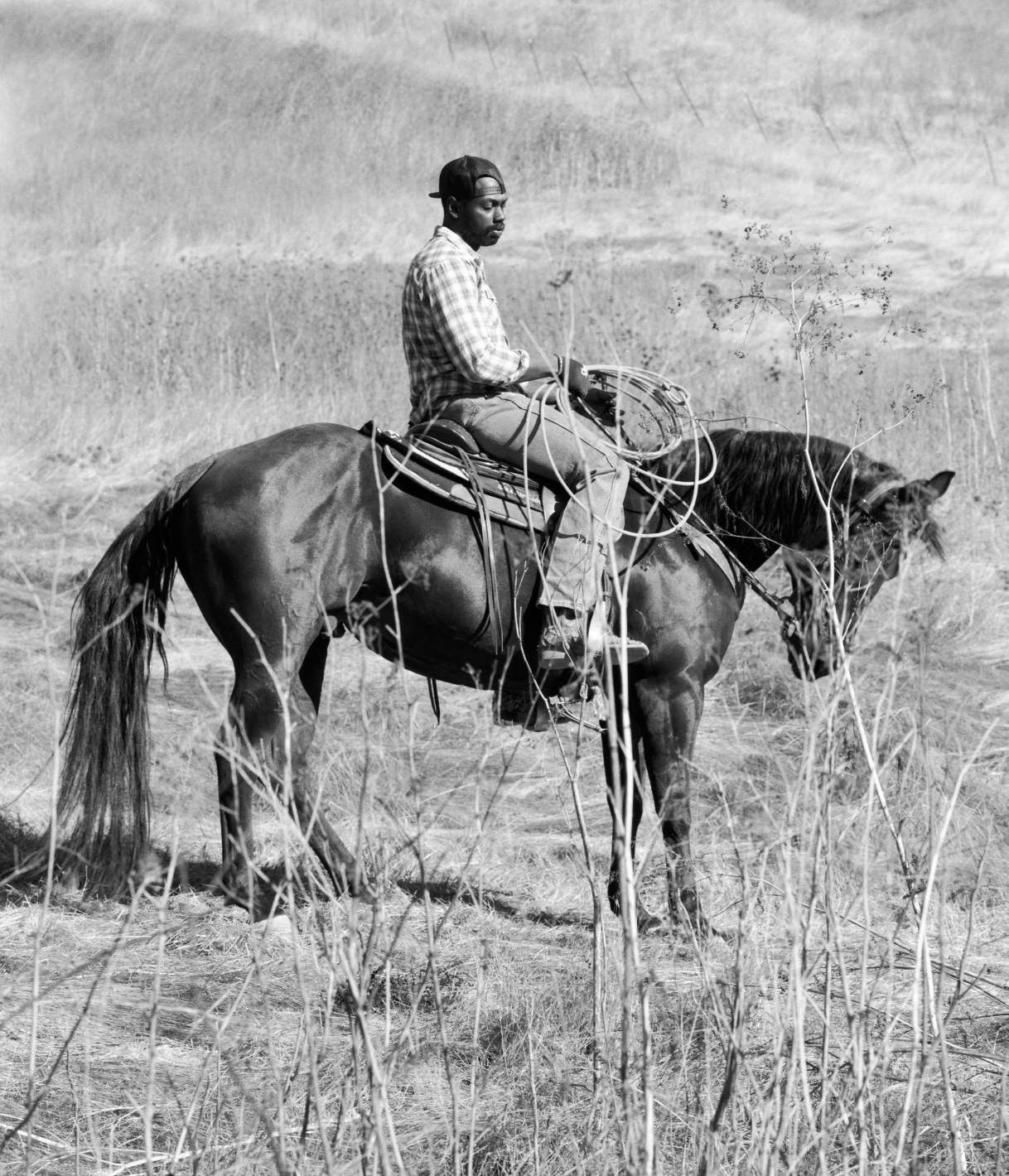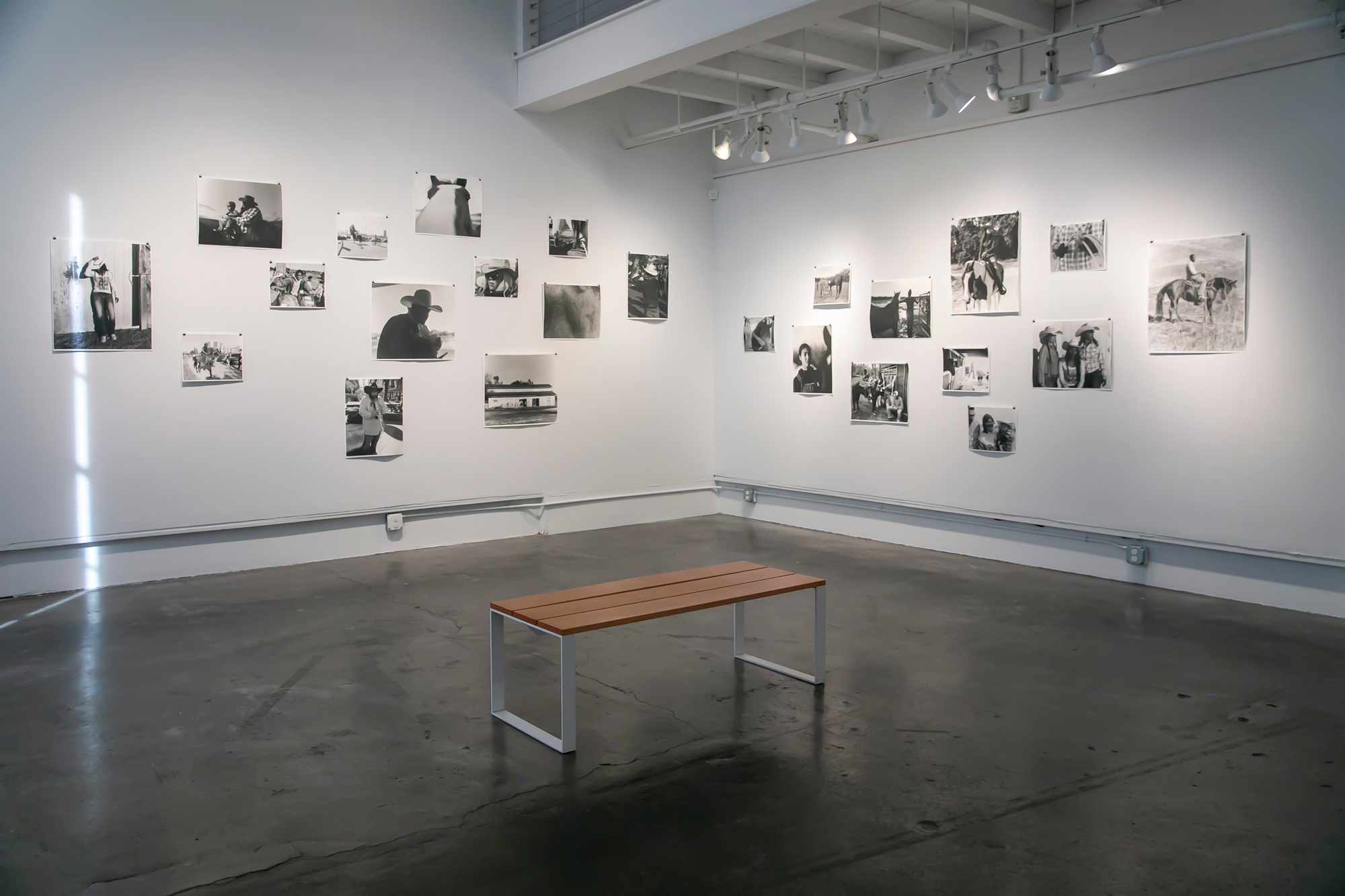When the Great Migration led Black families to venture north and west with their eyes on new horizons, many made that journey while maintaining the traditions of their Southern roots, bringing recipes, lessons and practices into new homes.
Richmond artist Charles Lee can trace his own family history back to Southern states like Texas and Louisiana, and those ties now inform his practice. His first solo exhibition, sweat + dirt, on view through Feb. 3, 2024 at SF Camerawork, includes black-and-white photographs and installations — including a horse saddle, rocking chair and bales of hay.
The show transports viewers to the outskirts of big cities, in places like Jennings and Lafayette, Louisiana, where Lee centers the relationships between people and their horses, and explores how the traditions of farmwork have persisted through generations for Black Americans. Lee says he’s interested in the ancestral connection between humans and “this very majestic and important animal.”
“Even before this job came to the Americas, we were herders,” Lee says, referencing On Brand, a large-scale chemigram piece, which also features a branding iron hanging from the gallery ceiling. “Our ancestors were herders, and they didn’t break the cattle or break the horses. It was an agreement that they fostered with this giant animal. Whereas Western ways of training an animal is to break it physically and use violence in order to get it to submit.”

sweat + dirt is an extension of Lee’s 2023 MFA thesis show at California College of the Arts, which, in turn, was part of a project he began in 2016 called BEEN HERE. Seven years after he got the initial idea for a photo series from his cousin, Lee has incorporated videos and found objects into the project. “I had always desired to work with objects,” he says. “So originally those pieces were extensions of the photographic practice that brought it more into an installation piece.”




